
The Sagrada Familia stands as a testament to the genius of architect Antoni Gaudí, captivating millions with its intricate designs and towering spires. This architectural marvel is not just a church; it is a symbol of Barcelona, embodying the city's rich history and artistic spirit.
As you explore this magnificent basilica, you'll encounter a blend of nature-inspired motifs and spiritual symbolism that together create an unforgettable experience. Join us to Discover the Majesty of Sagrada Familia: Barcelona's Iconic Gem and witness the breathtaking beauty that makes it a must-visit destination for travelers from around the globe.
The Architectural Wonders of Sagrada Familia: A Deep Dive into Gaudí's Vision
Antoni Gaudí's vision for the Sagrada Familia is a fusion of spirituality and nature, deeply rooted in his belief that architecture should harmonize with the environment. The intricate facades, including the Nativity and Passion facades, showcase Gaudí's innovative use of light and shadow, creating a dynamic visual experience. Visitors can marvel at the unique sculptural details that tell biblical narratives, inviting onlookers to engage with the stories of faith and creation.
One of the most striking features of the Sagrada Familia is its structural innovation. Gaudí employed the principles of catenary arches and hyperbolic paraboloids, allowing for the construction of soaring towers and organic forms that mimic natural structures. This daring approach not only enhances the aesthetic appeal but also ensures the building's stability and endurance. Key features include:
- 18 Towers: Representing the 12 apostles, the Virgin Mary, the four evangelists, and Jesus Christ.
- Colorful Stained Glass: Infusing the interior with vibrant light that shifts throughout the day.
- Intricate Columns: Designed to resemble trees, creating a forest-like atmosphere within the basilica.
The ongoing construction of the Sagrada Familia reflects Gaudí's original plans, which blend neo-Gothic and Art Nouveau styles. As a UNESCO World Heritage Site, this masterpiece continues to evolve, drawing inspiration from nature and spirituality. Each visit offers a new perspective on Gaudí's genius, making it a living embodiment of his artistic journey and a profound experience for all who come to witness its grandeur.
Exploring the History of Sagrada Familia: From Inspiration to Construction
Constructed over a span of more than a century, the history of the Sagrada Familia is as intricate as its design. The project's inception dates back to 1882 when architect Francisco de Paula del Villar was commissioned to build a traditional Gothic church. However, in 1883, the visionary Antoni Gaudí took over, infusing the design with his unique style that integrated nature and spirituality.
Gaudí's inspiration was deeply rooted in his devout Catholic faith and his reverence for the natural world. He believed that the universe itself held divine patterns that could be reflected in architecture. This perspective led him to incorporate organic shapes and forms, representing the connection between the divine and the earthly. His sketches and models reveal a blend of visionary ideas that would redefine sacral architecture.
The construction process has faced numerous challenges, including funding issues and the Spanish Civil War, which halted progress for many years. Despite these setbacks, advancements in technology and dedicated craftsmanship have allowed for ongoing work that closely adheres to Gaudí's original vision. The basilica is projected to be completed by 2026, coinciding with the centenary of Gaudí's death. Here are some key historical milestones:
- 1882: Foundation stone laid for the Sagrada Familia.
- 1883: Antoni Gaudí becomes chief architect.
- 1936: Construction halted due to the Spanish Civil War.
- 2026: Expected completion, marking 100 years since Gaudí's passing.
Today, the Sagrada Familia is not just a symbol of Barcelona but also a living testament to the enduring legacy of Antoni Gaudí. Each stone laid tells a story of artistic ambition and spiritual devotion, inviting visitors to explore a masterpiece that transcends time and continues to inspire awe across generations.
Why Sagrada Familia is a Must-Visit Landmark in Barcelona
The Sagrada Familia is not only an architectural masterpiece, but it also serves as a vibrant cultural hub in Barcelona. Visitors are drawn to its stunning design and the energy that surrounds this iconic landmark. Its unique blend of artistry and spirituality makes it an essential stop for anyone seeking to understand the heart of Barcelona.
One of the reasons the Sagrada Familia stands out as a must-visit landmark is its breathtaking interior. The basilica's soaring columns and intricate stained glass create a kaleidoscope of light that transforms the atmosphere throughout the day. This enchanting play of colors contributes to the spiritual experience that many visitors describe. Here are some highlights of the interior:
- Forest-like Columns: Mimicking trees, these columns support the basilica's ceiling while enhancing the natural feel.
- Vibrant Stained Glass Windows: Each window tells a story, casting colorful light that shifts with the sun.
- Symbolic Iconography: Every detail, from the altars to the sculptures, reflects Gaudí's deep faith and artistic vision.
Moreover, the Sagrada Familia is a living project, continuously evolving as construction progresses. This ongoing development allows visitors to witness the artistry of skilled craftsmen who are committed to realizing Gaudí's extraordinary vision. The blend of history, art, and architecture creates a unique experience that captivates all who visit, making it truly unforgettable.
Finally, the Sagrada Familia is easily accessible, situated in the bustling heart of Barcelona. Its proximity to other cultural landmarks, such as Park Güell and Casa Batlló, makes it a perfect stop for those exploring the city. Whether you're an art lover, a history enthusiast, or simply a curious traveler, the Sagrada Familia promises to leave you inspired and in awe of its grandeur.
The Symbolism Behind Sagrada Familia's Unique Design Elements
The Sagrada Familia is rich in symbolism, with each design element conveying deeper meanings linked to faith and nature. Gaudí envisioned the basilica as a representation of Christianity, with its numerous elements reflecting biblical narratives. For instance, the rising towers symbolize the aspiration towards the heavens, while the intricate façades narrate the life of Jesus, guiding visitors through a spiritual journey as they explore the building.
Among the most compelling aspects of the Sagrada Familia are its natural motifs, which embody Gaudí's belief in organic architecture. The basilica features numerous references to the natural world, including tree-like columns and floral patterns, which serve to remind visitors of the divine connection between the earth and the spiritual realm. These elements create a harmonious atmosphere that enhances the overall experience of the space.
Additionally, the use of color plays a significant role in the Sagrada Familia's design. The stained glass windows are crafted to transform natural light into vibrant hues, enveloping the interior in a colorful embrace that changes throughout the day. This dynamic interplay of light not only beautifies the space but also evokes a sense of divine presence, further deepening the spiritual experience for onlookers.
Lastly, Gaudí's choice to integrate various architectural styles, including neo-Gothic and Art Nouveau, reflects his intention to create a multifaceted representation of faith. Each design choice serves a purpose, contributing to the overall narrative of the basilica as a living testament to spiritual devotion and artistic innovation. Visitors to the Sagrada Familia are not merely witnessing an architectural feat; they are engaging with a profound statement about the relationship between humanity, nature, and the divine.
Tips for Visiting Sagrada Familia: What You Need to Know
When planning your visit to the Sagrada Familia, it's crucial to book your tickets online in advance. This not only guarantees your entry at a specific time but also helps you avoid long queues, which can be especially daunting during peak tourist seasons. Consider purchasing a combined ticket that includes an audio guide, as it provides valuable insights into Gaudí's vision and the intricate details of the basilica.
Be sure to allocate enough time to fully appreciate the site. A visit typically takes around 1.5 to 2 hours, allowing you to explore both the interior and the exterior. Make sure to pay special attention to the stunning stained glass windows, which create a captivating play of light inside the basilica. To enhance your experience, consider visiting during the morning or late afternoon when the sunlight filters through the glass, adding to the spiritual atmosphere.
For a more immersive experience, join a guided tour that delves into the history, architecture, and symbolism of the Sagrada Familia. These tours often provide behind-the-scenes insights and unique perspectives that self-guided visits might not offer. Additionally, consider visiting on a weekday rather than the weekend to enjoy a quieter atmosphere, allowing for a more contemplative experience.
Lastly, respect the sanctity of the site by maintaining a quiet demeanor and refraining from flash photography. The Sagrada Familia is not only a tourist attraction but also a place of worship, and understanding this will enhance your visit. Remember to take a moment to reflect on the intricate artistry and profound meaning embedded in every aspect of Gaudí's masterpiece.
Sagrada Familia: Understanding Its Cultural Impact and Significance
The Sagrada Familia serves as a profound cultural landmark, symbolizing the intersection of art, faith, and community in Barcelona. Its status as a UNESCO World Heritage Site not only highlights its architectural innovation but also underscores its significance in global cultural heritage. The basilica stands as a beacon of inspiration for artists, architects, and spiritual seekers alike, encouraging dialogue about the relationship between human creativity and the divine.
Visitors to the Sagrada Familia often find themselves immersed in its rich tapestry of symbolism, which reflects both historical and contemporary values. Some key cultural impacts include:
- Artistic Inspiration: The basilica has influenced countless artists and architects, inspiring new waves of creativity.
- Community Engagement: It fosters a sense of belonging among locals and visitors alike, serving as a gathering point for celebrations and events.
- Educational Opportunities: The site provides educational programs that promote understanding of Gaudí's vision and the broader context of Catalan culture.
Moreover, the ongoing construction of the Sagrada Familia resonates with themes of perseverance and dedication. As each stone is meticulously placed, the project conveys a message of hope and continuity, highlighting the importance of craftsmanship and community involvement. The basilica’s evolution reflects the dynamic spirit of Barcelona, making it a living symbol of resilience and artistic ambition.
Ultimately, the Sagrada Familia stands not just as a testament to Gaudí’s genius but as a vibrant reminder of the cultural richness that Barcelona nurtures. Its profound influence extends beyond architecture, inviting visitors to reflect on the broader implications of faith, art, and humanity’s quest for beauty and meaning in a complex world.
Para adentrarte aún más en este tema, te invitamos a ver el video que explora la majestuosidad de la Sagrada Familia, la joya icónica de Barcelona.

 Discover Barcelona at Your Own Pace: 24 or 48-Hour Hop-On Hop-Off Bus Tour
Discover Barcelona at Your Own Pace: 24 or 48-Hour Hop-On Hop-Off Bus Tour Discover Barcelona's Hidden Gems: Unveiling the Best Kept Secrets
Discover Barcelona's Hidden Gems: Unveiling the Best Kept Secrets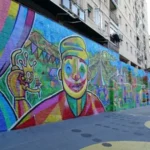 Exploring Hidden Neighborhoods: Discovering El Raval
Exploring Hidden Neighborhoods: Discovering El RavalIf you want to know other articles similar to Discover the Majesty of Sagrada Familia: Barcelona's Iconic Gem you can visit the category WHERE YOU CAN GO.
Leave a Reply

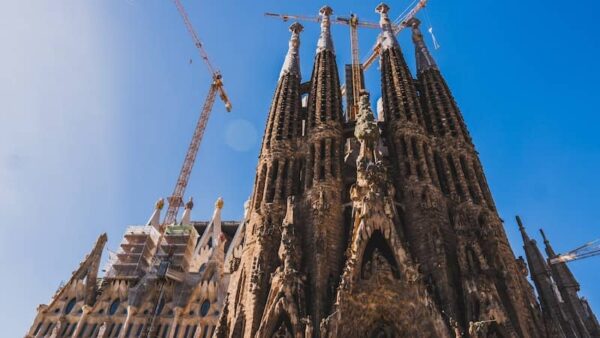
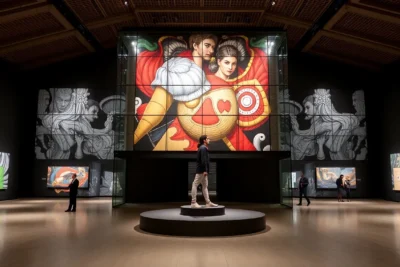
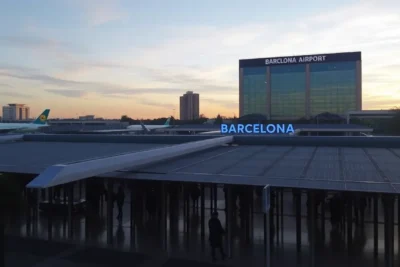

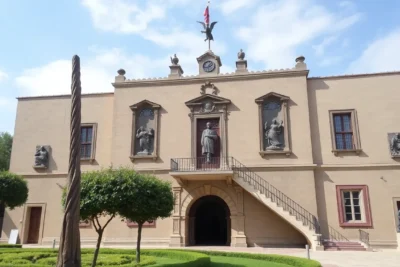

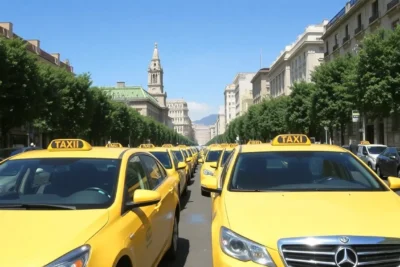
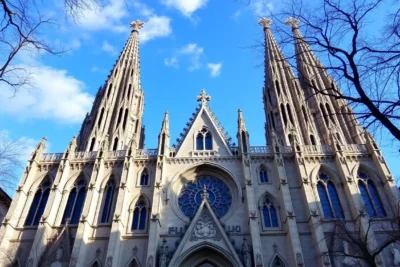

Read more!